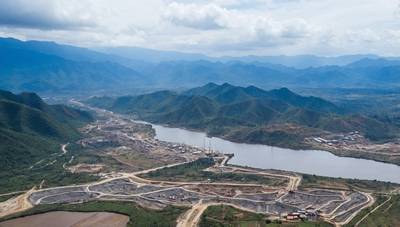 07 September 2013, Hararae – The only way Zimbabwe’s power sector can improve is through a massive flow of investment for infrastructure expansion and refurbishment, an MDC-T MP has said.
07 September 2013, Hararae – The only way Zimbabwe’s power sector can improve is through a massive flow of investment for infrastructure expansion and refurbishment, an MDC-T MP has said.
Settlement Chikwinya, who was re-elected MP for Mbizo in KweKwe in the July 31st poll, said he does not see the country managing to expand the power generating infrastructure as there is no money for it. Power in Zimbabwe is primarily generated from thermal and hydro energy.
The country needs in excess of $4 billion for the development of adequate electricity infrastructure which is essential for sustained growth of the economy.
The power sector is considered to be a core industry as it facilitates development across various sectors of the economy, such as manufacturing, agriculture, commercial enterprises and transport.
‘Since power generation, transmission and electrification projects are extremely costly; one cannot adequately develop the electricity infrastructure in a large country like ours, without massive investments.
‘Zimbabwe is currently not the best placed investment option because of ZANU PF’s indigenisation and empowerment policy. This is a policy which is retrogressive, a policy which is anti-investment,’ said Chikwinya.
During the Ian Smith regime, the country generated 2,200 megawatts of electricity but since Independence in 1980, the power generating capacity has dropped to between 1,200-1,600 MW.
This has left consumers grappling with massive power cuts for the last decade. This week the power utility company, ZESA issued a warning that the situation will persist unchecked for another next five years, until it completes new generation projects, subject to availability of funding.
Lack of development in the sector has seen ZESA being forced to introduce load shedding, something that has made life difficult for ordinary citizens and businesses. On Wednesday ZESA warned Zimbabweans that the current load shedding was set to increase.
‘We have this dire prognosis from ZESA and the only sensible thing the government can do now is to revisit its policies that infringe our capacity to attract Foreign Direct Investment,’ Chikwinya said.
Last week, NMBZ Holdings chief executive officer James Mushore warned that the cancellation of domestic consumers’ debts owed to local authorities and plans to write off more utility bills may worsen the liquidity crisis.
This populist campaign promise by ZANU PF, which has been implemented by many local authorities, has had an adverse effect on ZESA as most of their customers have resorted to boycotting paying their bills.
Government departments, the private sector and ordinary consumers owe ZESA more than $400 million, an amount, if recouped in the next month, would see the company breathe a new lease of life into its operations and refurbishment agenda.
Outgoing Enery and Power Minister Elton Mangoma pointed out earlier this year that there were plans to revamp Kariba’s hydro-power station and Hwange thermal station to increase power generation to 2,200 megawatts of electricity at peak consumption. Currently the country relies on imports to cover the gap.
Already, ZESA has drawn up plans to offload and place the Harare thermal power station onto the open market for private energy investors. They are also running a rigorous marketing crusade to implore defaulters to meet their payment obligations. But these are being undermined by ZANU PF’s policies.
– Tichaona Sibanda.



